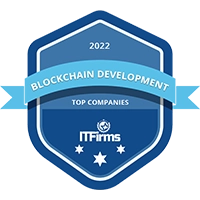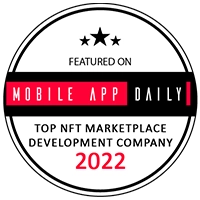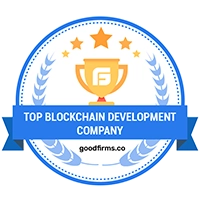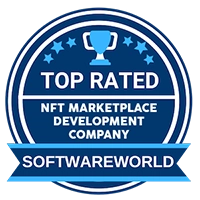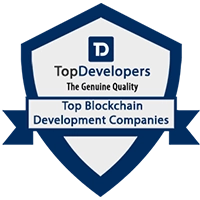Introduction to Large Language Models (LLMs)
Large Language Models (LLMs) have transformed the way we interact with technology. Whether it's writing, summarizing, translating, or generating content, LLMs are at the core of many AI applications today. But what exactly are they? At their core, LLMs are deep learning models trained on vast amounts of text data to understand, process, and generate natural language. From chatbots to code generation, these models are incredibly versatile and form the backbone of many AI-driven solutions.
In today's AI landscape, LLMs play an integral role. They've made it possible for machines to understand human language in a way that was once only imaginable. Applications such as virtual assistants, language translation tools, and content generators all rely on the immense power of these models. Businesses are also using LLMs to automate tasks like customer support, document analysis, and even creative writing. With LLMs, AI is no longer just about crunching numbers—it's about meaningful communication.
The Heart of LLMs: Transformer Models Explained
How Transformer Models Power LLMs
At the heart of every LLM lies a transformer model, a groundbreaking neural network architecture that has dramatically improved how machines understand language. Unlike older models, transformers can process an entire sequence of words simultaneously, making them faster and more efficient. This parallel processing is why LLMs can handle large amounts of text data quickly, whether it's answering a question, summarizing a document, or generating a complex response.
Breaking Down the Encoder-Decoder Architecture
Transformers rely on an encoder-decoder structure, which may sound complex, but it's a straightforward concept. The encoder reads and processes the input data—think of it as the "understanding" phase. Meanwhile, the decoder takes that processed information and generates an output, such as a translated sentence or a response in a conversation. This structure allows LLMs to perform a wide variety of tasks, from translation to summarization, all with remarkable accuracy.
Understanding Self-Attention and Why It Matters
One of the key features that sets transformers apart from other models is the self-attention mechanism. In simple terms, self-attention allows the model to focus on different parts of a sentence based on their importance. It weighs the relationships between words, making connections that are crucial for understanding the overall context. This ability to "attend" to different parts of the input makes LLMs incredibly adept at tasks like answering questions or generating coherent, contextually relevant responses.
How Large Language Models Learn: Training and Fine-Tuning?
The Training Process: From Massive Data Sets to Knowledge
Large Language Models (LLMs) don't just magically know how to understand or generate human language—they need to learn it first. The training process involves feeding these models massive datasets, often sourced from the internet, books, or research papers. These datasets can consist of trillions of words, providing LLMs with the ability to understand syntax, semantics, and even context across different languages and topics. Through training, LLMs can recognize patterns, predict words, and generate coherent responses. The larger and more diverse the dataset, the better the model becomes at understanding the intricacies of language.
Pre-training vs. Fine-tuning: How LLMs Adapt to Specific Tasks
Training LLMs isn't a one-size-fits-all approach. First, there's pre-training, where the model is exposed to a vast array of general data. This phase helps the LLM grasp the basics of language, such as word meanings, sentence structures, and grammar. Pre-trained models are useful for general tasks, but they may not excel at domain-specific challenges. That's where fine-tuning comes into play. Fine-tuning involves taking a pre-trained model and adjusting it to perform a particular task, like translating legal documents or generating code. This process improves the model's performance in niche areas, making it versatile for various industries and applications.
Prompt Tuning: Teaching LLMs to Respond to Different Queries
One of the most efficient ways to improve an LLM's output is through prompt tuning. Instead of retraining the entire model, prompt tuning allows users to give specific instructions—or prompts—that guide the model's responses. For instance, you can ask the model to generate a response with examples or specify a tone of voice. There's even few-shot and zero-shot prompting, which refers to how many examples the model needs before it can effectively respond. With few-shot prompting, the model is shown a handful of examples before generating an answer. Zero-shot prompting, on the other hand, requires no examples and relies purely on the prompt itself. This flexibility makes LLMs incredibly adaptable to a wide range of tasks, from casual chat to complex problem-solving.
Inside LLMs: Key Components That Drive Performance
Embedding Layers: Teaching Models to Understand Meaning
At the core of LLMs' ability to process language are embedding layers. These layers convert words into dense vectors of numbers, which allows the model to understand their meaning based on context. Think of each word as having a unique numerical representation. The model then uses these representations to identify relationships between words, capturing both semantic meaning and syntactic roles. For example, the model knows that "apple" and "fruit" are closely related because of their positions in this numerical space. Embedding layers enable the model to process input efficiently, which is crucial for understanding language at scale.
Feedforward Layers: Powering High-Level Abstractions
Once the LLM understands the basic meaning of words through embeddings, it needs to make sense of more abstract concepts. That's where feedforward layers come in. These layers take the embedded data and process it further, transforming the inputs into higher-level representations. By passing information through several fully connected layers, the model gains the ability to interpret more complex patterns and relationships in language. This is how LLMs can make inferences, summarize long passages, or even perform tasks like generating software code or answering questions.
Attention Mechanisms: Focusing on What Matters in a Sentence
One of the most critical innovations in LLM architecture is the attention mechanism. In a sentence, not all words are equally important for understanding the context or meaning. Attention mechanisms allow the model to focus on the parts of the input that matter the most for a given task. For example, in a sentence like "The cat, which was sitting on the mat, jumped," the attention mechanism might prioritize the words "cat" and "jumped" to generate an accurate response. This focus helps the model produce more coherent and contextually relevant outputs, whether it's for text generation, translation, or summarization. Without attention mechanisms, the model would struggle to make sense of longer, more complex inputs.
Ready to Harness the Power of Large Language Models?
Contact UsLLM Use Cases: Real-World Applications Across Industries
Conversational AI and Chatbots: Elevating Customer Support
One of the most prominent uses of Large Language Models (LLMs) is in conversational AI, especially chatbots. Businesses are leveraging LLM-powered chatbots to offer efficient, 24/7 customer support. Whether a customer is asking for order updates, technical assistance, or product recommendations, LLMs can generate human-like responses in real time. These chatbots can understand context, maintain coherent conversations, and provide accurate information, reducing the need for human agents. As a result, businesses can handle larger volumes of customer queries while improving response times and customer satisfaction.
Code Generation: Assisting Developers with Smarter Tools
LLMs have also become a powerful asset for developers, streamlining the process of code generation. With tools like OpenAI's Codex, developers can input plain language prompts, and the model can generate corresponding code snippets in various programming languages. This helps save time, especially when working on repetitive or boilerplate code. Instead of writing lines of code from scratch, developers can use these models to automate parts of their work, from simple functions to more complex algorithms. It's not just about writing code, though—LLMs can also help with debugging and suggesting improvements, making development faster and more efficient.
Content Creation: Automating Copywriting, Summarization, and More
Content creation is another area where LLMs shine. These models can generate human-like text that can be used for articles, marketing copy, or even social media posts. Need a quick product description? An LLM can draft it for you in seconds. Struggling with summarizing long documents? LLMs can digest the information and produce concise, readable summaries. Whether it's generating new content or reworking existing text, businesses are finding that LLMs can help them scale content production without compromising quality. This can be a game-changer for industries like marketing, journalism, and e-commerce, where high volumes of content are needed.
Sentiment Analysis: Unlocking Insights from Customer Feedback
Understanding customer sentiment is critical for improving products and services. LLMs can be trained to perform sentiment analysis, helping businesses identify how customers feel about a particular product, service, or experience. By analyzing reviews, social media posts, or customer surveys, these models can categorize sentiments as positive, negative, or neutral, allowing companies to gauge public opinion quickly. This automated approach to sentiment analysis provides businesses with actionable insights, enabling them to respond to feedback more effectively and tailor their offerings to meet customer needs.
Healthcare Innovations: From Patient Intakes to Drug Discovery
LLMs are also making significant strides in healthcare. One key application is in automating patient intake processes, where LLM-powered systems can gather essential information from patients through conversational interfaces. These systems can ask relevant questions, understand symptoms, and provide initial insights, helping medical staff save time and focus on critical cases. Beyond patient interactions, LLMs are also being used in medical research, particularly in drug discovery. By analyzing vast datasets of medical research, these models can identify potential drug compounds, speeding up the process of finding treatments for diseases. This technology is revolutionizing how healthcare providers and researchers approach both patient care and innovation.
The Benefits of Large Language Models
- Enhanced Productivity: LLMs automate repetitive tasks like data analysis, content generation, and code writing, freeing up time for more strategic work.
- Scalability: LLMs can handle large volumes of information quickly, making them ideal for businesses that need to process or generate large datasets without compromising accuracy.
- Adaptability: LLMs can be fine-tuned for specific tasks and industries, from healthcare to legal services, providing tailored solutions based on unique needs.
- Contextual Understanding: These models grasp the nuances of language, including context and intent, ensuring more relevant and accurate outputs in applications like customer service or content creation.
- Faster Time-to-Market: By accelerating processes like product description generation or technical documentation, LLMs help businesses launch products and services faster.
- Reduced Human Error: Automating tasks with LLMs reduces the risk of human errors in activities like data entry or information retrieval.
- Cost Efficiency: LLMs can replace manual labor for certain tasks, leading to reduced operational costs over time.
- Continuous Learning: LLMs can be updated and fine-tuned regularly, improving their performance as more data becomes available.
- Language Flexibility: LLMs can process multiple languages, making them ideal for businesses operating in global markets.
- Improved Decision-Making: By quickly analyzing and summarizing large datasets, LLMs provide insights that support better and faster decision-making in areas like market research or business strategy.
A Commercial Edge: Why Businesses Are Embracing LLMs
Streamlining Customer Interactions with LLM-Powered Chatbots
Businesses today are increasingly turning to LLM-powered chatbots to enhance customer interactions. These chatbots can handle customer queries around the clock, providing immediate, personalized responses. With LLMs, chatbots are no longer restricted to answering simple questions—they can handle complex conversations, resolve issues, and even upsell products. For businesses, this means a smoother customer experience with fewer bottlenecks, leading to higher satisfaction and customer retention rates.
Boosting Efficiency in Marketing, Legal, and Finance
LLMs are transforming how businesses in marketing, legal, and finance operate by automating time-consuming tasks. In marketing, LLMs can draft compelling copy, generate social media posts, and optimize ad campaigns based on data insights. In legal, they can sift through contracts or legal documents, reducing the time needed for reviews. Meanwhile, in finance, LLMs can analyze market trends, automate report generation, and assist with compliance tasks. This increased efficiency allows professionals to focus on strategic initiatives while routine tasks are handled swiftly by AI.
Gaining Competitive Advantage with AI-Enhanced Services
Incorporating LLMs into business processes not only boosts operational efficiency but also provides a competitive edge. Companies that integrate LLMs can offer smarter, faster, and more personalized services, making them more attractive to customers. Whether it's improving product recommendations, automating customer service, or streamlining internal workflows, businesses using LLMs can outpace competitors by delivering high-quality service at scale. The agility and customization options provided by LLMs make them a valuable asset in industries that prioritize innovation and customer satisfaction.
Looking to Develop a Custom LLM Solution for Your Business?
Get in TouchThe Power of Extensibility: LLMs as a Foundation for Custom Solutions
Tailoring LLMs to Fit Specific Industry Needs
One of the key strengths of LLMs is their ability to be tailored for specific industry needs. By fine-tuning an LLM with domain-specific data, businesses can create customized AI solutions that address their unique challenges. For instance, in healthcare, LLMs can be trained on medical literature to assist in diagnosing conditions or recommending treatments. In finance, they can analyze complex market data to provide investment insights. This ability to adapt and specialize makes LLMs an incredibly versatile tool for companies across various sectors.
How Additional Training Creates Domain-Specific Expertise
LLMs excel at general tasks, but additional training is what transforms them into industry experts. By providing models with data relevant to a particular domain—whether it's legal case law, medical research, or software code—they can develop deep expertise. This process, known as fine-tuning, allows the model to understand the nuances of that field and deliver more accurate, useful outputs. Businesses benefit from these finely-tuned models because they provide more precise insights and solutions, reducing errors and increasing productivity.
Examples of Successful Domain-Focused LLMs (Like Codex and BloombergGPT)
There are already several examples of LLMs that have been successfully adapted for specific industries. Codex, for instance, is an LLM fine-tuned for coding tasks. It helps developers generate code snippets, automate routine tasks, and even debug errors. BloombergGPT, another domain-focused model, is designed for the finance industry. It processes large volumes of financial data, offering insights and predictions that help analysts make informed decisions. These examples highlight the potential of LLMs when they're customized for particular industries, demonstrating the real-world impact of domain-specific expertise.
Deploying Large Language Models: Practical Tips for Integration
How to Get Started with LLMs in Your Business
If you're considering integrating LLMs into your business, the first step is understanding how they align with your objectives. Start by identifying the specific tasks or processes where an LLM can provide value—whether it's automating customer interactions, streamlining content creation, or enhancing data analysis. Once you've pinpointed these areas, explore available LLM platforms like GPT or Codex. Many pre-built models exist, so you don't need to start from scratch. Evaluate the platforms based on your needs, and consider testing LLMs in low-risk environments before scaling them across your operations.
Best Practices for Integrating LLMs into Your Existing Systems
Integrating LLMs into your current systems requires thoughtful planning. First, ensure compatibility between the LLM and your existing infrastructure. You might need to work with APIs to connect the model with your workflows. It's also important to maintain data security, as LLMs handle sensitive information. Employ encryption and access controls to protect data privacy. Finally, don't forget about continuous monitoring. LLMs evolve, and their outputs can shift over time, so regular audits of the system are crucial to ensure performance remains consistent and aligned with your goals.
Optimizing Performance with Fine-Tuned and Pre-Trained Models
When deploying LLMs, one of the key decisions you'll make is whether to use a pre-trained model or fine-tune one for your specific needs. Pre-trained models offer a quick, cost-effective solution for general tasks. However, if your business has unique requirements—such as legal document analysis or healthcare-related tasks—fine-tuning may be necessary. Fine-tuning involves training the model on your own data to improve accuracy in specialized areas. Regularly update your model with new data to keep performance at its best, and use metrics to track its effectiveness.
Why Choose Appdupe for Your LLM Development Needs?
Partnering with Appdupe for LLM development ensures you get industry-leading expertise and a tailored approach to creating AI-driven solutions. With a proven track record in building custom large language models, Appdupe leverages cutting-edge technology to deliver scalable, efficient, and high-performance LLMs that align with your business goals. Whether you need models for automation, customer interaction, or data analysis, Appdupe offers end-to-end support, from design to deployment. Their team of experts ensures a seamless integration, helping you maximize the value of LLM technology while staying ahead of the competition.
Conclusion: Unlocking the Potential of Large Language Models
Large Language Models (LLMs) have revolutionized industries by automating tasks, enhancing customer interactions, and driving innovation. Their versatility, from content generation to complex data analysis, makes them invaluable tools for businesses aiming to improve efficiency and scale operations. As LLM technology continues to evolve, the possibilities for application in various fields seem endless, offering businesses a competitive edge and opportunities for growth. Now is the perfect time for companies to embrace LLMs, harnessing their power to streamline processes and unlock new avenues for innovation in today's fast-paced digital world.



